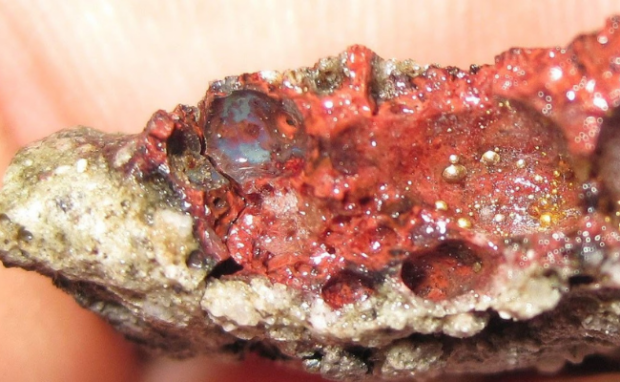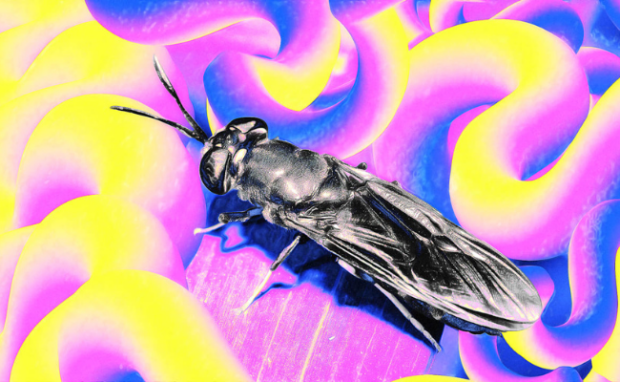Rare crystal forms from first-ever nuclear bomb test
Scientists discovered a rare crystal, a rare form of matter known as quasicrystal, in the first nuclear bomb test site. Geophysicist Terry Wallace said it only forms in extreme environments outside the Earth. Also, its structure is vastly different from conventional crystals like table salt and diamonds.
The creation of the atomic bomb was a horrific part of history that its inventor deeply regrets. However, that event seems to have a silver lining as it created a unique material. Scientists are now eager to learn more about this mysterious crystal. More importantly, we might find practical applications for this nuclear rock.
This article will elaborate on what we know about the quasicrystal from the nuclear test site. Later, I will discuss other projects developing new materials.
What do we know about the rare crystal?

ScienceAlert says it came from the first nuclear bomb test, which occurred in the state of New Mexico on July 16, 1945, at 5:29 AM. You might remember it from the recent Oppenheimer film starring Cillian Murphy.
J. Robert Oppenheimer named the atomic bomb trial “Trinity,” but the detonated plutonium implosion device known as the “Gadget.” The bomb released energy equivalent to 21 kilotons of TNT and vaporized the 30-meter test tower and copper wires linking it to recording equipment.
The explosion fused the tower and copper with the desert sand and asphalt below into a shiny green mineral called trinitite. Decades later, scientists found a rare form of matter inside called a quasicrystal.
Scientists used scanning electron microscopy and X-ray diffraction to find a rare crystal called red trinitite inside the quasicrystal. Eventually, they found traces in one of the samples.
It was a minuscule, 20-sided grain of iron, calcium, copper, and silicon with a five-fold rotational symmetry impossible in most crystals. “This quasicrystal is magnificent in its complexity – but nobody can yet tell us why it was formed in this way,” geophysicist Terry Wallace said.
You may also like: Stanford paint can reduce energy use
It was once thought impossible because it only forms in “extreme environments that rarely exist on Earth.” He added, “They require a traumatic event with extreme shock, temperature, and pressure. We don’t typically see that, except in something as dramatic as a nuclear explosion.”
Moreover, its structure is different from most crystals because its atoms do not form a repeating pattern. In 1984, experts thought it was impossible because they believed crystals may only be ordered or disordered.
However, they changed their minds when they found this rare crystal in laboratory tests and meteorites. Further research will help us understand Earth’s quasicrystals better.
Other unique materials experiments

It’s interesting to stumble upon rare materials accidentally, but most scientists experiment to produce them intentionally. For example, Karen Wooley and her research team used flies to produce biodegradable plastic!
“For 20 years, my group has been developing methods to transform natural products, such as glucose obtained from sugar cane or trees, into degradable, digestible polymers that don’t persist in the environment,” she said.
“But those natural products are harvested from resources that are also used for food, fuel, construction, and transportation,” the head researcher noted. These conflicts could reduce the availability of biodegradable materials.
You may also like: Professor recycles coffee as 3D printing material
That is why her colleague Jeffrey Tomberlin suggested using waste products from farming black soldier flies. These insects start as eggs, become larvae, and become adult flies. Larvae contain many nutrients, so people raise them for animal consumption and waste reduction.
However, flies have a short life span after breeding, so Tomberlin recommended using these adult carcasses to create biodegradable plastic. After all, “We’re taking something that’s quite literally garbage and making something useful out of it,” said graduate student Cassidy Tibbetts.
These waste products contain chitin, which they convert into a polymer called chitosan. As a result, the researchers created a biodegradable plastic!
Conclusion
Scientists found a rare crystal in the first-ever nuclear bomb test site. Its atomic explosion fused nearby materials with enough heat and temperature to produce this material, which is usually found outside our planet.
At the time of writing, scientists are studying the material further. After all, it could help us understand quasicrystals further. More importantly, we might find practical uses for it.
Learn more about the nuclear quasicrystal study in the Proceedings of the Natural Academy of Sciences (PNAS) website. Check out more digital trends at Inquirer Tech.